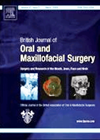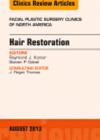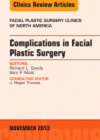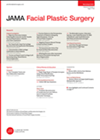
Journal Reviews archive for February 2014
In vivo animals model shows no disadvantages of osteosynthesis with pins compared to titanium screws for condylar fractures
The advantages of resorbable pins have been proved in craniofacial surgeries. Here the authors extend its use to fractures of the condylar head, which are surgically challenging. The authors aimed to compare in vivo, the stability of fixation of condylar...
Minimal gap interpositional arthroplasty versus aggressive gap arthroplasty in TMJ ankylosis
Arthroplasty in temporomandibular joint (TMJ) ankylosis is managed by three basic techniques; gap arthroplasty, interpositional arthroplasty and joint reconstruction. In this three-year, prospective study of 15 patients, the authors evaluate whether or not aggressive gap arthroplasty is essential in the...
Method of surgical resection affects reporting of margins of tumours in the oral cavity
It is important to obtain tumour-free resection margins in patients with oral cancer. Pathological processing is known to cause tissue to shrink, which affects the reported margins, and it is postulated that the method of resection also has an effect....
Infection and sepsis in burns: potential clinical predictors
In this retrospective study, the authors attempt to identify the most reliable predictors of early infection (within 10 days) in acute burns patients to try to reduce unnecessary antibiotic therapy. They recognise that infections and sepsis represent the leading cause...
Management of major burns – a role for Oxandrolone
Oxandrolone The authors present a retrospective single centre based study assessing the effect of Oxandrolone (OX) on the length of stay (LOS) following ≥15% of total body surface area (TBSA) burns. One hundred and sixty-seven surviving patients were retrospectively analysed...
Cosmetic botulinum toxin: minimal invasive facial enhancement
Myriam Loyo and Theda Kontis present a review of indications for minimally invasive facial cosmetic procedures, based on chemodenervation with botulinum toxin A. The authors present the following treatments in a well structured manner: chemical brow lift, treatment of hypertrophic...
Complications of otoplasty
Otoplasty has a long history. Currently, two schools of thought predominate, which can be summarised as cartilage cutting and cartilage sparing techniques. The former includes removal of cartilage and the scoring of cartilage, whereas the latter involves contouring by placement...
Complications of rhinoplasty
Whilst rhinoplasty is one of the more common procedures performed by facial and general plastic surgeons, it is associated with a wide range of complications. Complications increase with the complexity of the surgery and in particular when there are both...
Size does matter
Megasessions in hair restoration, being defined as transplantation of 3,000 or more grafts, have the potential to definitely treat a significant area of scalp in only one procedure, allowing the patient to achieve their desired goals while minimising their overall...
Nasal reconstruction – short and sweet
This brief article by Stephen S Park presents his modified technique for nasal reconstruction, based on a single-stage forehead flap. The author presents this method as an alternative to a multiple staged interpolated forehead flap and discusses its advantages and...
Cheek and lip reconstruction
The authors present a well-structured review of the reconstruction of cutaneous defects of the cheek and lip. They present new findings that have an impact on the planning and understanding of local flaps for the reconstruction of both areas. Integrated...
Complex auricular reconstruction using a 3D printer
The authors of this paper present a new technique for complex auricular reconstruction in a patient with a previous squamous cell carcinoma of the scalp, parotid and neck treated by surgery and postoperative radiotherapy. The patient presented a depression on...








